Cagliari, Sardinia, Italy | 9-14 Sept, 2024
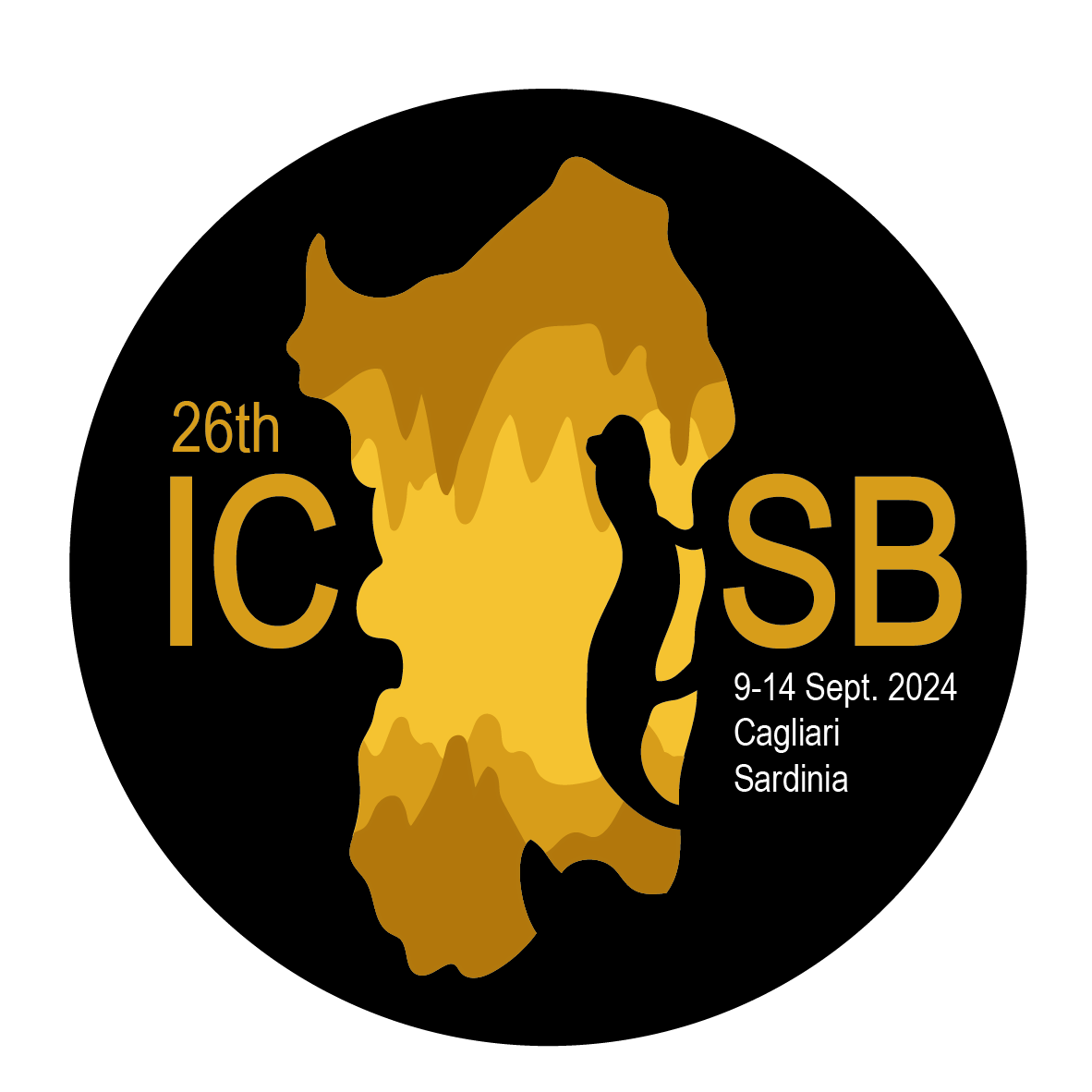
26th International Conference on Subterranean Biology
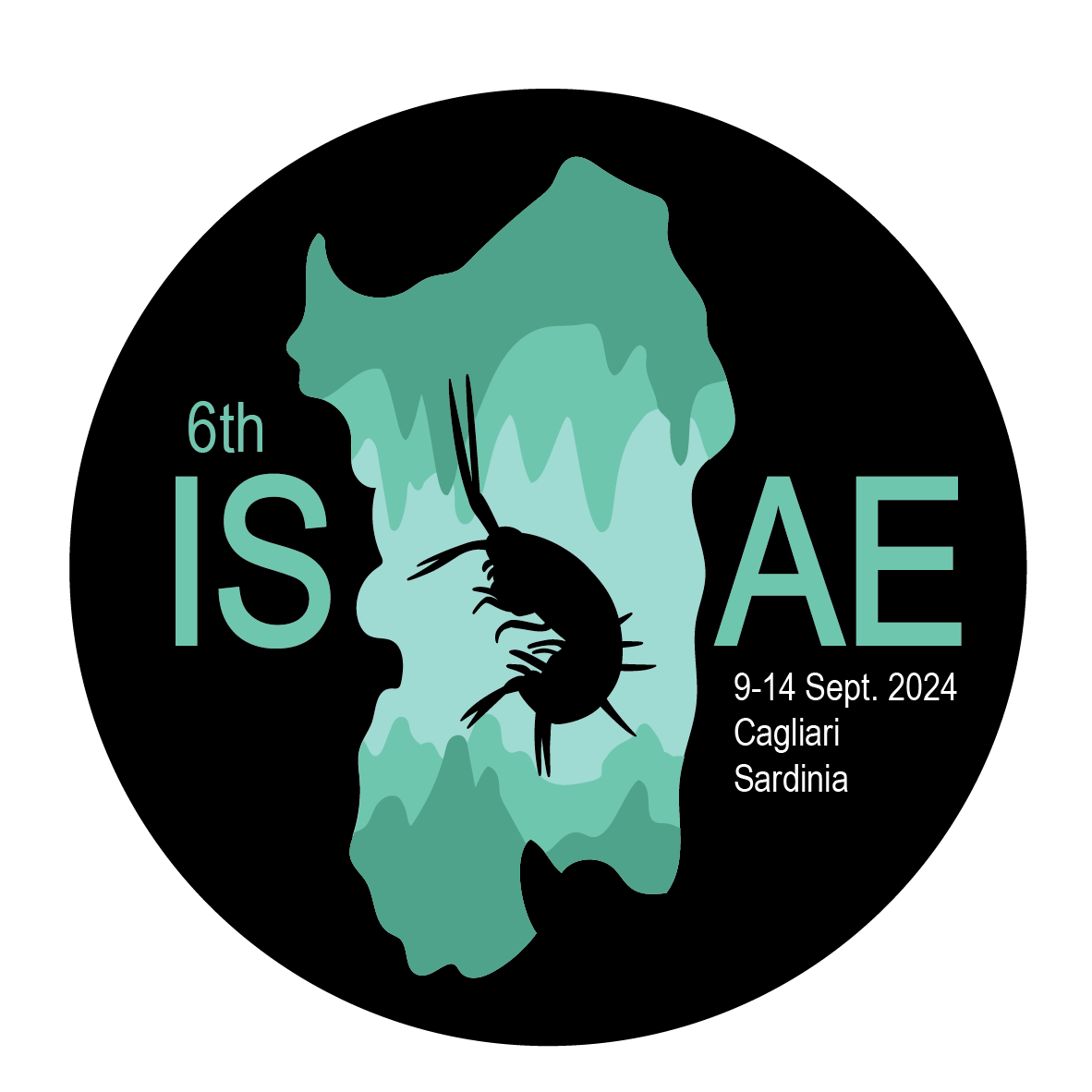
6th International Symposium on Anchialine Ecosystems
Confirmed Speakers
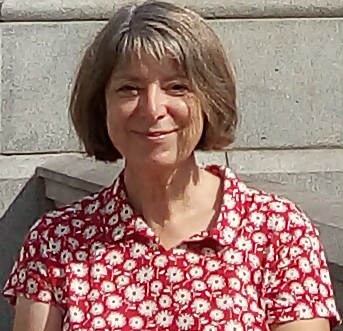
Anne Robertson
Professor of Ecology
University of Roehampton, London United Kingdom
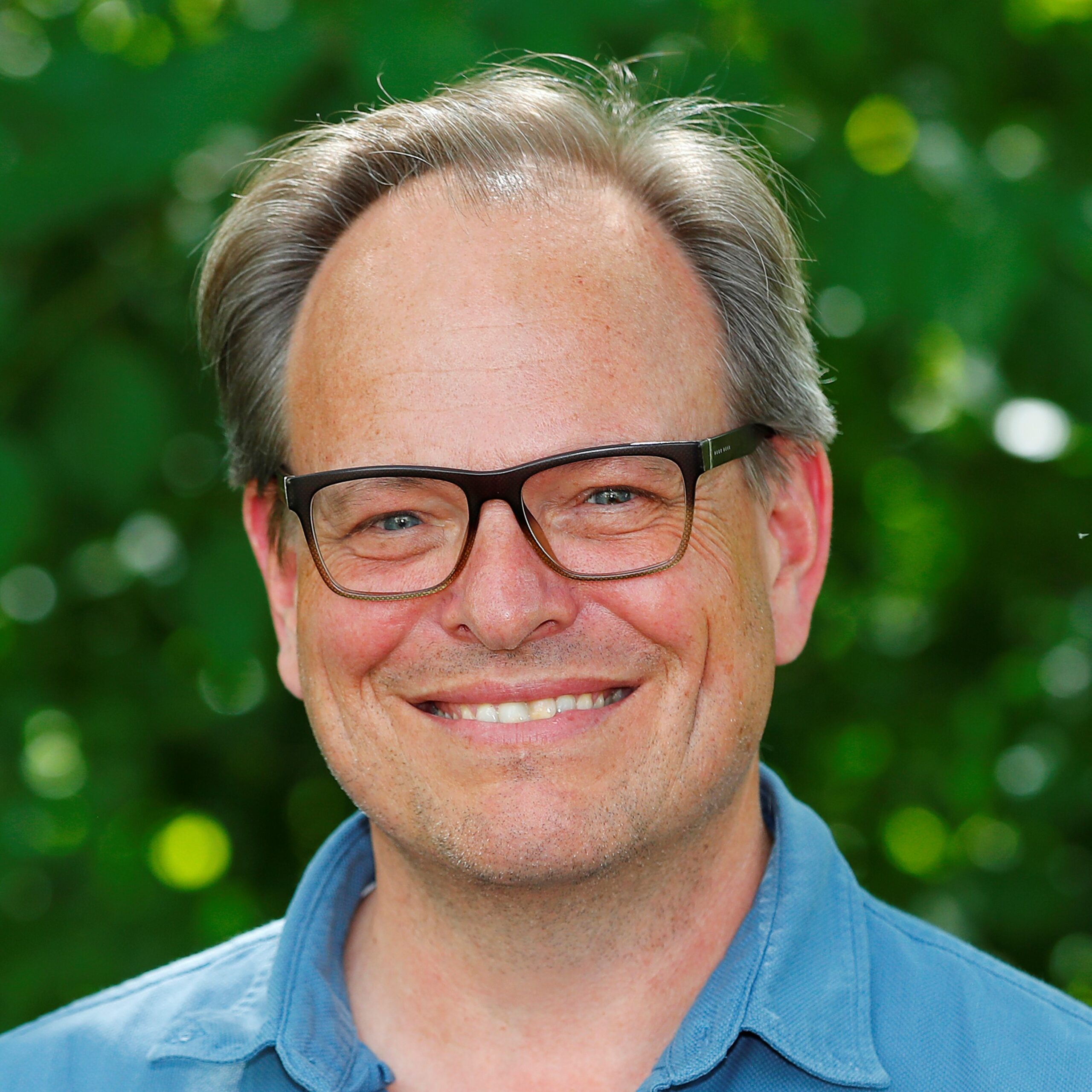
Tillmann Lueders
Chair of Ecological Microbiology
Bayreuth Center of Ecology and Environmental Research (BayCEER), University of Bayreuth, Bayreuth, Germany
.
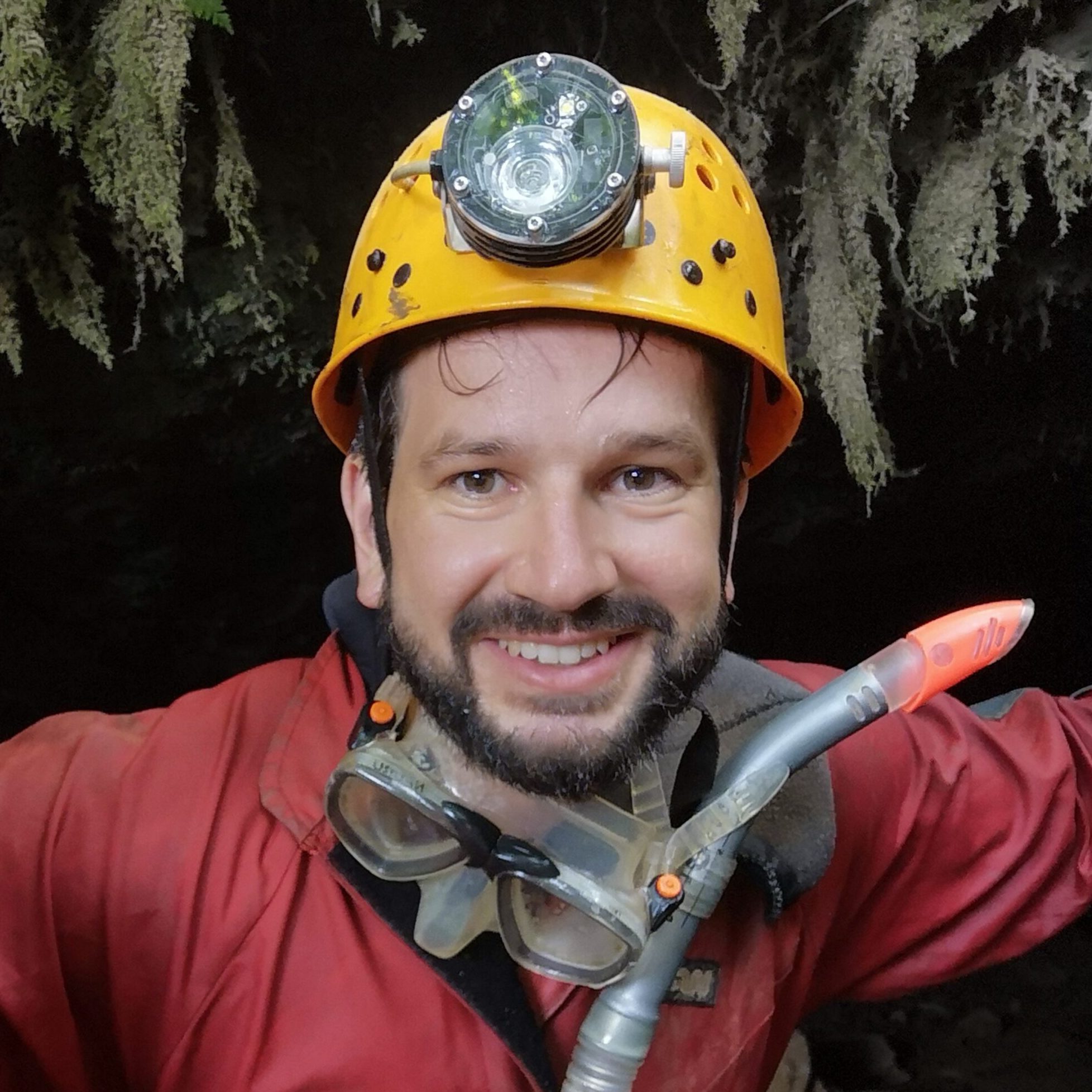
Hans Recknagel
Postdoctoral Researcher
Biotechnical Faculty, University of Ljubljana, Ljubljana, Slovenia
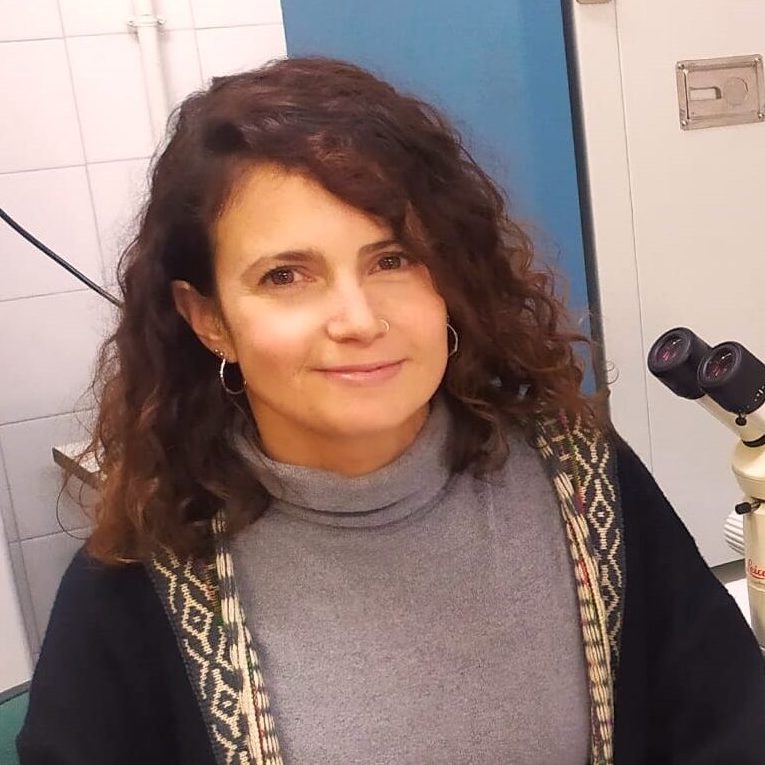
Susana Pallarés
Postdoctoral Researcher
Department of Ecology and Hydrology, University of Murcia, Spain
.
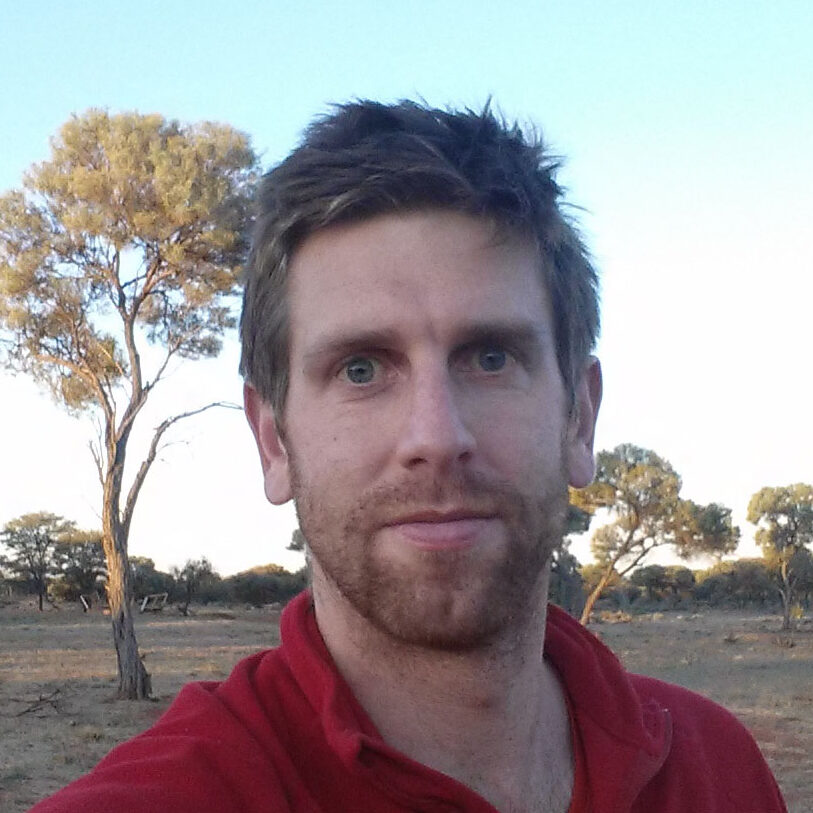
Mattia Saccò
Lecturer
Subterranean Research and Groundwater Ecology (SuRGE) Group, Trace and Environmental DNA (TrEnD) Lab, School of Molecular and Life Sciences, Curtin University, Perth, Western Australia, Australia
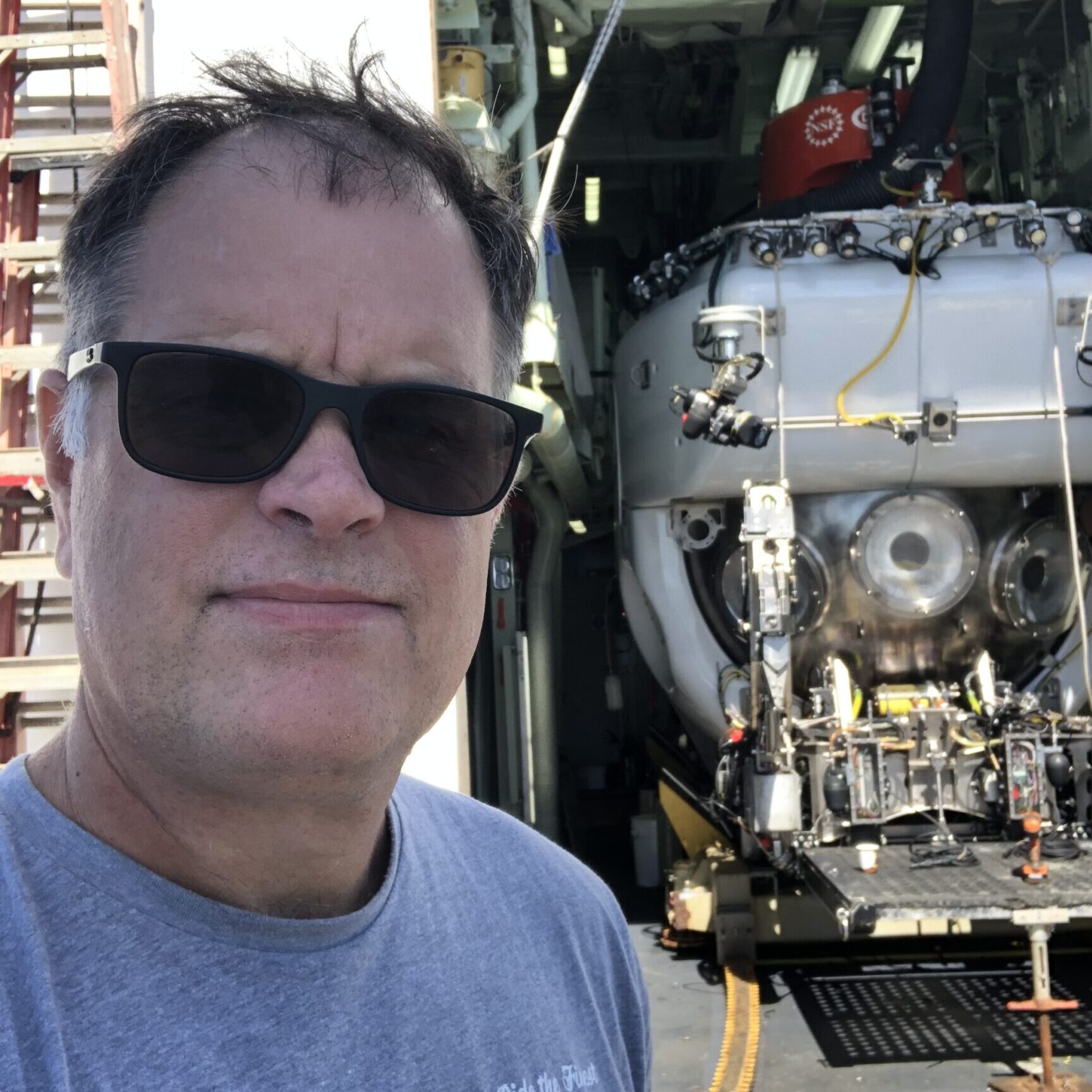
John W Pohlman
Researcher
.
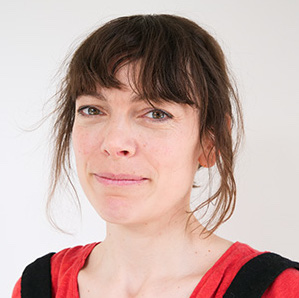
Sara Johansson
Senior Policy Officer: Water Pollution Prevention
European Environmental Bureau
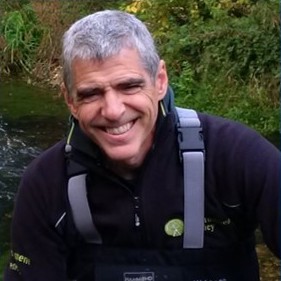
Tim Johns
Researcher
Environment Agency Red Kite House, Howbery Park, Wallingford. Oxfordshire, UK
.
Conference Program
Conference Schedule Highlights
- 9th September (Monday): Registration opens; Morning workshop (DarCO); Afternoon poster session.
- 10th – 13th September: daily sessions, including plenary lectures and oral presentations.
-
14th September (Saturday): Choice of social excursions to Santa Barbara’s cave or Bue Marino cave. More info >>
Additional notes – DarCo Workshop
Participants will have the opportunity to decide upon arrival if they wish to attend the DarCO workshop. DarCo is an international research project (more about DarCO) funded by the European Union and Biodiversa+, focusing on the conservation of subterranean ecosystems in Europe. During the DarCo workshop, which occurs at the mid-term of the project, we will first discuss the main advancements of the project so far. Following that, we will have an open discussion on how to move forward in the protection of subterranean ecosystems in Europe, both theoretically and practically.
Preliminary Program
Day 1: Monday, 9 Sept
| 8:30 – 14:00 | Conference registration and poster preparation |
| 9:00 – 13:00 | Workshop DarCO |
| 14:30 – 15:00 |
Opening of the conference and explanation of the program. Presentation of the project METALCAVE. This study received funding from the European Union – Next-GenerationEU – National Recovery and Resilience Plan (NRRP) – MISSION 4 COMPONENT 2, INVESTIMENT N. 1.1., CALL PRIN 2022 PNRR D. .D. 1409 del 14-09-2022 – (METALCAVE) CUP N. E53D23015380001. Presentation of the project Sub-BioMon. This study received funding from the European Union, under the program Biodiversa+, Horizon2020 |
| 15:00 – 19:00 | Poster session (exposition of 44 posters) + welcome aperitif |
| Speaker | Poster title |
| Kekuiapoiula Keliipuleole | HEcosystem controls on an anchialine pool shrimp species, Halocaridina rubra, presence and behaviors in North Kona, Hawai’i |
| Eter Magradze | The current state of cave fauna and its conservation in Georgia |
| Mara Knüsel | Pronounced changes of subterranean biodiversity patterns along a Late Pleistocene glaciation gradient |
| Natália Raschmanová | Ice cave entrances as a unique natural laboratories: Eco-physiological traits of Collembola from contrasting habitats |
| Mieke van der Heyde | Validating COI metabarcoding primers for detection of subterranean fauna |
| Eryl Austin-Bingamon | Environmental drivers of variation in hyporheic invertebrate community composition |
| Oilivier Guillaume | Temperature-indipendent telomere lengthening with age in the long-lived human fish (Proteus anguinus) |
| Stefano Mammola | The DarCo project: A cost-effective plan to incorporate subterranean ecosystems in post-2020 biodiversity and climate change agendas |
| Kangkanjyoti Bhattacharyya | Revealing cryptic diversity of the cave populations of Heteromurus nitidus (Templeton 1835) using integrative taxonomical methods |
| Mária Fedičová | Revealing the genetic structure of Allorhiscosoma sphinx (Verhoeff 1907) inhabiting the region of Slovakia |
| Elżbieta Dumnicka | Low diversity of Crustacea and Annelida in municipal wells in Krakow, Poland |
| Michael Csader | Modelling the distribution of European Leptodirini (Leiodidae) with a special focus on diversity hotspots and their threats |
| Luise Kruckenhauser | The first genome of Garra longipinnis – more to come! |
| Enrico Lunghi | Exploring cultivable stress-tolerant bacteria in the skin microbiota of Speleomantes italicus |
| Ana Savić | Zonation of springs: eucrenal – a door to the subterranean; hypocrenal – a window to the true epigean from the perspective of macroinvertebrates |
| Mahmood Mehrafrooz Mayvan | Contribution to subterranean Oncopodura Carl & Lebedinsky 1905 (Hexapoda Collembola) from Iran and Balkan with notes on the taxonomy of the genus |
| Ashley Casarez | Relationships between hydraulic properties and invertebrate community structure in the hyporheic zones of rivers in Texas, USA |
| Rodica Plăiașu | Macroinvertebrate communities in caves and subterranean habitats with anthropic origin |
| Michal Rendoš | Unearthing subterranean biodiversity: insights into genus Niphargus in the Western Carpathians |
| Ester Premate | Life-history traits in Niphargus balcanicus: new observational data from hatching to two years of age |
| Maja Zagmajster | Sub-BioMon – Developing and testing approaches to monitor subterranean biodiversity in karst |
| Behare Rexhepi | Niphargus diversity from South-West France through the lens of the barcoding fragment of cytochrome-oxidase I (Crustacea Amphipoda) |
| Dora Kermek | Insights into population structure and relatedness of olms (Proteus anguinus) in Postojna-Planina cave system Slovenia |
| Anja Pekolj | Including data on subterranean biodiversity into NarcIS – a national nature conservation information system in Slovenia |
| Veronika Petrovová | Intraspecific genetic variation in surface and cave mites of the family Damaeidae (Acari Oribatida) in Slovakia |
| Laura Meyer | Biodiversity patterns in the urban groundwater of Halle (Saale), Germany |
| Luis Crespo | Diversity and conservation of arthropods and bryophytes in the volcanic caves of the Azores |
| Andrej Mock | The northernmost and isolated among blind julid millipedes in Europe: the genus Typhloiulus in the Western Carpathians |
| Valerija Zakšek | Development of eDNA monitoring of Congeria jalzici in Slovenia |
| Lucija Kauf | Schmidtea polychroa as a proof-of-concept model for investigating cave-related pigment loss in planarians |
| Maite Mascaró | Physiological impacts of salinity and pesticides on the Yucatan isopod Creaseriella anops |
| Nuno Simões | Cenote biodiversity through citizen science |
| Santiago Gaviria | The harpacticoid fauna (Crustacea, Copepoda) from interstitial environments of the Vjosa River and some tributaries in Albania, including the description of a new species of Nitocrella |
| Sanda Iepure | Life’s Toxic Sanctuary in Movile Cave (Dobrogea, Romania): Insights into ostracod shell chemical composition, ultrastructure and epibionts |
| Ana Sofia P. S. Reboleira | Conservation, monitoring and restoration assessment of the world-class cave biodiversity hotspot in Portugal |
| Grant C. Hose | STYGOTOX: A quality assessed database of (eco)toxicological data on stygofauna and other aquatic subterranean organisms |
| Ferdinando Didonna | Six years of cave biodiversity conservation campaign: Cave Animal of the Year in Italy |
| Fabricia S. Paz | The influence of scale and environment on the beta diversity of troglobitic organisms in subterranean ecosystems of Carajás National Forest – Brazil |
| Shalva Barjadze | Cavernicolous terrestrial isopods (Oniscidea) from Georgia Caucasus |
| Tiziana Di Lorenzo | TrAQ: a free behavioural tracking software for subterranean fauna |
| Enrico Lunghi | Preliminary data on the presence of trace elements in cave water and soil |
| Leonardo Latella | Reviewing biodiversity and distribution of subterranean fauna in China |
| Martina Cappelletti | First insight into the microbiota of gypsum subterranean environments to study their evolution and protection |
| Eleonora Cialente | Is tail fat accumulation higher in hypogean vs epigean populations of Speleomantes? |
Day 2: Tuesday, 10 Sept
| Speaker | Plenary lectures | Moderators | |
| 9:00 – 9:15
9:15 – 9:30 |
Sara Johansson
Tim Johns |
EU policies for the management of subterranean water bodies
Developing the first national monitoring network for groundwater ecology in England |
Tiziana Di Lorenzo, Christian Griebler |
| Biomonitoring | |||
| 9:30 – 9:45 | Maja Zagmajster | Exploring the methods to monitor subterranean biodiversity via caves in Slovenia | Diana Galassi, Traian Brad |
| 9:45 – 10:00 | Olivier Collard | Echoes of the underworld: eDNA pathways for cave monitoring | Diana Galassi, Traian Brad |
| 10:00 – 10:15 | Tajda Gredar | Blood samples as an invaluable source of information on the health and reproductive status of the olm Proteus anguinus | Diana Galassi, Traian Brad |
| 10:15 – 10:30 | Ester Premate | A multi-faceted approach to the assessment of alpha and beta diversity patterns in a groundwater biodiversity hotspot: conservation implications and future challenges | Diana Galassi, Traian Brad |
| 10:30 – 10:45 | Kathryn Korbel | Learning from non-scientists: how can citizens assist to fill groundwater knowledge gaps? | Diana Galassi, Traian Brad |
| 10:45 – 11:00 | Simões Nuno | CENOTEANDO – a group effort to contribute to the census, multidisciplinary description and biological monitoring of the Yucatan peninsula sinkholes (cenotes), Mexico | Diana Galassi, Traian Brad |
| Coffee Break | |||
| Distribution | |||
| 11:30 – 11:45 | Florian Malard | A collaborative database to fasten sustainable biodiversity data acquisition : the World Asellidae Database | Maja Zagmajster, Mattia Di Cicco |
| 11:45 – 12:00 | Rodrigo Ferreira | Far below elephants and rhinos: the role of regional and local predictors on invertebrate richness in African caves | Maja Zagmajster, Mattia Di Cicco |
| 12:00 – 12:15 | Giulia Perina | Extraordinary diversity and patterns of distribution in tiny subterranean crustaceans: Bathynellacea of Western Australian arid zone | Maja Zagmajster, Mattia Di Cicco |
| 12:15 – 12:30 | Alejandro Martinez | Stygofauna Mundi: a comprehensive global biodiversity database of groundwater-related habitats across marine and freshwater realms | Maja Zagmajster, Mattia Di Cicco |
| 12:30 – 12:45 | Tvrtko Dražina | The Dinaric cave tube-worm Marifugia cavatica Absolon and Hrabě 1930 (Annelida: Serpulidae): New insights into distribution and Biology | Maja Zagmajster, Mattia Di Cicco |
| 12:45 – 13:00 | Constanze Englisch | Life below the City of Vienna – Drivers of groundwater fauna distribution in an urban ecosystem | Maja Zagmajster, Mattia Di Cicco |
| Lunch Break | |||
| Plenary lecture | |||
| 14:30 – 15:00 | Anne Robertson | Out of sight out of mind in the Plastisphere? | Grant Hose |
| Environmental assessment | |||
| 15:00 – 15:15 | Cukrov Neven | Mercury content in aquatic organisms from anchialine caves Croatia | Rodrigo Ferreira, Efrat Gavish-Regev |
| 15:15 – 15:30 | Agostina Tabilio Di Camillo | Impact of tetrachloroethylene on groundwater ecosystems: Sub-chronic effects on the locomotion behavior of two harpacticoid copepod species | Rodrigo Ferreira, Efrat Gavish-Regev |
| 15:30 – 15:45 | Julia Becher | Groundwater fauna below the city of Munich and relationships to urbanization effects | Rodrigo Ferreira, Efrat Gavish-Regev |
| 15:45 – 16:00 | Mara Knüsel | Are land use effects trickling underground? Implications on stygofauna and current drinking water protection buffers | Rodrigo Ferreira, Efrat Gavish-Regev |
| 16:00 – 16:15 | Christian Griebler | Nation-wide standardization of groundwater ecosystem health assessment – a microbiological-ecological approach | Rodrigo Ferreira, Efrat Gavish-Regev |
| 16:15 – 16:30 | Fabien Glatting | Spatial and temporal analysis of groundwater fauna | |
| Coffee Break | |||
| DNA and genome-based studies | |||
| 17:00 – 17:15 | Mohammed M. Tawfeeq | A novel improved Feulgen approach reveals genome size variations within and between surface and subterranean populations of Asellus aquaticus (Crustacea Isopoda) | Roman Alther, Constanze Englisch |
| 17:15 – 17:30 | Alice Salussolia | Genome skimming and amplicon sequencing: novel DNA-based techniques shed light on the taxonomy and phylogeny of the Niphargus thuringius – N. dolenianesis species complex (Crustacea Amphipoda Niphargidae) | Roman Alther, Constanze Englisch |
| 17:30 – 17:45 | Jean-François Flot | Delimiting species in the dark: a benchmark of DNA taxonomy workflows for subterranean organisms | Roman Alther, Constanze Englisch |
| 17:45 – 18:00 | Elizabeth Borda | Insights from genome skimming of Remipedia (Xibalbanus spp.) | Roman Alther, Constanze Englisch |
| 18:00 – 18:15 | Michal Rendoš | Unveiling the unknown: first insight into molecular diversity and DNA barcode library of epikarst-dwelling invertebrates in the Western Carpathians | Roman Alther, Constanze Englisch |
| 18:15 – 18:30 | Fernando Calderón Gutiérrez | Using genomic tools to enhance biodiversity assessments in anchialine caves | Roman Alther, Constanze Englisch |
Day 3: Wednesday, 11 Sept
| Speaker | Plenary lecture | Moderators | |
| 8:45 – 9:15 | Mattia Sacco | Environmental DNA in groundwater ecosystems – the ultimate complementary biomonitoring tool? | Fabio Stoch |
| Environmental DNA | |||
| 9:15 – 9:30 | Roman Alther | Combining citizen science and environmental DNA metabarcoding to study groundwater fauna in Switzerland |
Alice Salussolia, Jean-François Flot |
| 9:30 – 9:45 | Jason B. Alexander | Developing environmental DNA (eDNA) methods for detecting troglobitic fauna in a diversity hotspot | Alice Salussolia, Jean-François Flot |
| 9:45 – 10:00 | Grant C. Hose | A comparison of eDNA metabarcoding and metagenomics for assessing groundwater communities | Alice Salussolia, Jean-François Flot |
| 10:00 – 10:15 | Syngeon Rodman | Tracking the elusive blind cave eel (Ophisternon candidum) – results of an opportune eDNA degradation study | Alice Salussolia, Jean-François Flot |
| Biodiversity | |||
| 10:15 – 10:30 | Teo Delić | Pairing phylogeny and historical geology to understand the evolutionary radiation of leptodirine cave beetles (Coleoptera, Leiodidae, Cholevinae) | Troy Sakihara, Martina Cappelletti |
| 10:30 – 10:45 | Slavko Polak | Leptodirini beetle males with five versus four protarsomere segments; it doesn’t really matter | Troy Sakihara, Martina Cappelletti |
| Coffee Break | |||
| 11:15 – 11:30 | Christy M. Slay | From the dark side of paradise: Three new cavernicolous species discovered in lava tubes on Hawai’i Island | Troy Sakihara, Martina Cappelletti |
| 11:30 – 11:45 | Michel Perreau | The individual fossil of the poorly known subterranean beetle subfamily Catopocerinae (Coleoptera: leiodidae) | Troy Sakihara, Martina Cappelletti |
| 11:45 – 12:00 | Ľubomír Kováč | An unexpected diversity of Palpigradi at the northernmost distributional limit in Europe | Troy Sakihara, Martina Cappelletti |
| 12:00 – 12:15 | Anja Kos | Disentangling the diversity of the cave centipede Lithobius stygius species complex | Martina Pavlek, Alejandro Martínez |
| 12:15 – 12:30 | Benjamin Schwartz | New stygobiont Neoniphargidae (Amphipoda) and groundwater biodiversity in small non-karst aquifers along the Mount Lofty Ranges and Fleurieu Peninsula of South Australia | Martina Pavlek, Alejandro Martínez |
| 12:30 – 12:45 | Traian Brad | Niphargus (Amphipoda, Niphargidae) research in Romania. Diversity, pitfalls and shortcomings | Martina Pavlek, Alejandro Martínez |
| 12:45 – 13:00 | Andrea Rendošová | A hidden diversity in cave-associated oribatid mite from Central Europe | Martina Pavlek, Alejandro Martínez |
| 13:00 – 13:15 | Serban M. Sarbu | Subterranean Sulfidic Biodiversity in the Sarandaporo Canyon (Albania-Greece) | Martina Pavlek, Alejandro Martínez |
| Lunch Break | |||
| Plenary lecture | |||
| 14:30 – 15:00 | John W. Pohlman | The Octopipi, Osmosamplers and Echosounders: Innovations for conducting safe and effective hydro-biogeochemical research in karst subterranean estuaries | Sanda Iepure |
| Subterranean researches | |||
| 15:00 – 15:15 | Michael E. Slay | Filling in the gaps for the cavernicolous species records for Hawai’i | Ester Premate, Bill Humphreys |
| 15:15 – 15:30 | Leonardo Latella | Cold, dark and unknown: the natural history of ice caves | Ester Premate, Bill Humphreys |
| 15:30 – 15:45 | Michelle T. Guzik | Towards a barcode reference library for subterranean fauna | Ester Premate, Bill Humphreys |
| 15:45 – 16:00 | Gergely Balázs | Time does tell! Interdisciplinary approach for the evaluation of the cave fauna of the Mecsek Mountains, Hungary | Ester Premate, Bill Humphreys |
| 16:00 – 16:15 | Thomas Iliffe | Forty plus years of anchialine cave research | Ester Premate, Bill Humphreys |
| 16:15 – 16:30 | Benjamin Hutchins | Ten years of hyporheic zone investigation in Texas USA: large-scale patterns and the importance of karst | Ester Premate, Bill Humphreys |
| Coffee Break | |||
| Food-webs | |||
| 17:00 – 17:15 | Efrat Gavish-Regev | Tell me where you live and I will tell you what you eat – trophic position of funnel-web spiders from three ecological zones of caves with different nutrient source | Enrico Lunghi, Kath Korbel |
| 17:15 – 17:30 | Z. Fresno Lopez | A stable isotope study of organic matter cycling and food web dynamics in Cenote Crustacea, an anchialine cave in the Yucatán Peninsula, Mexico | Enrico Lunghi, Kath Korbel |
| 17:30 – 17:45 | Zeana Ganem | Assessing energy source effect on food-webs and arthropod assemblages in Levantine caves | Enrico Lunghi, Kath Korbel |
| 17:45 – 18:00 | David Brankovits | The origins and fate of dissolved organic carbon in the Yucatan Peninsula’s karst subterranean estuary | Enrico Lunghi, Kath Korbel |
| 18:00 – 18:15 | Raoul Manenti | Role of landscape of Fear (LOF) and Hunters’ Horizon (HuHo) in affecting foraging activity in subterranean and ecotonal freshwater habitats | Enrico Lunghi, Kath Korbel |
| 18:15 – 18:30 | Luca Coppari | Activity and abundance on subterranean populations of Monte Albo cave salamander (Speleomantes flavus) | Enrico Lunghi, Kath Korbel |
Day 4: Thursday, 12 Sept
| Speaker | Plenary lectures | Moderators | |
| 9:00 – 9:30 | Tillmann Lueders | Biofilms in caves and mines as a window into exciting and novel microbial ecophysiologies | Thomas Iliffe |
| Microbial diversity | |||
| 9:30 – 9:45 | Bill Humphreys | Metagenomics of Bundera sinkhole: Archaea, Bacteria and Viruses | Serban M. Sarbu, Megan L. Porter |
| 9:45 – 10:00 | Claire A. Chauveau | Unraveling hidden relationships: Dynamics and evolution of Thiothrix-crustacean symbioses in sulfidic cave environments | Serban M. Sarbu, Megan L. Porter |
| 10:00 – 10:15 | Ilaria Vaccarelli | What’s inside a Niphargus? | Serban M. Sarbu, Megan L. Porter |
| 10:15 – 10:30 | Martina Cappelletti | Unravelling the diversity and metabolic strategies of microorganisms colonizing quartzite subterranean environments through in-lab analyses and in-field sequencing | Serban M. Sarbu, Megan L. Porter |
| 10:30 – 10:45 | Filip Paul Boanca | Can microbes inform about the vulnerability of springs? Assessment of microbial communities and water quality across Austria | Serban M. Sarbu, Megan L. Porter |
| Coffee Break | |||
| Ecology | |||
| 11:15 – 11:30 | Efraín Chávez Solís | Effects of acute salinity changes to stygobionts in anchialine systems of the Yucatan Peninsula | Ana Sofia Reboleira, Elia Lo Parrino |
| 11:30 – 11:45 | Marconi Souza Silva | One cave, multiple worlds: cave zonation and habitat differentiation determining cave fauna distribution in a new Hotspot in neotropics | Ana Sofia Reboleira, Elia Lo Parrino |
| 11:45 – 12:00 | Raluca Ioana Bancila | Investigating the effect of microclimate variability and habitat heterogeneity on functional diversity of cave-dwelling arthropod communities | Ana Sofia Reboleira, Elia Lo Parrino |
| 12:00 – 12:15 | Peter Kozel | Habitat-specific disparity in mandible morphology of Leptodirini beetles (Leiodidae: Cholevinae) | Ana Sofia Reboleira, Elia Lo Parrino |
| 12:15 – 12:30 | Adrià Bellvert | Understanding distribution and interactions among European subterranean spiders | Ana Sofia Reboleira, Elia Lo Parrino |
| 12:30 – 12:45 | Francesco Cerasoli | Assessing the drivers behind variation in alpha and beta diversity of stygobitic copepods inside and outside European protected areas | Ana Sofia Reboleira, Elia Lo Parrino |
| 12:45 – 13:00 | Peter Ľuptáčik | Diversity of oribatid mites (Acari Oribatida) along environmental gradients of the cave entrances | Ana Sofia Reboleira, Elia Lo Parrino |
| Lunch Break | |||
| Plenary lecture | |||
| 14:30 – 15:00 | Susana Pallarés | Assessing the vulnerability of subterranean biodiversity to climate change from an experimental perspective | Stefano Mammola |
| Conservation | |||
| 15:00 – 15:15 | Stefano Taiti | Sardinia (Italy) as a hotspot of diversity for subterranean terrestrial isopods (Crustacea, Oniscidea) | Ana Komerički, Jason B. Alexander |
| 15:15 – 15:30 | Sarah Boulamail | Salinity and temperature increase impact groundwater crustacean metabolism and behaviour | Ana Komerički, Jason B. Alexander |
| 15:30 – 15:45 | Corrado Modica | Predator protection measures at bat rock roosts | Ana Komerički, Jason B. Alexander |
| 15:45 – 16:00 | Valerija Zakšek | Conservation genetics of Olms (Proteus anguinus): Baseline for their future | Ana Komerički, Jason B. Alexander |
| 16:00 – 16:15 | Fabio Stoch | Bue Marino cave: A new global hotspot of subterranean biodiversity on Sardinia island (Mediterranean Sea) | Ana Komerički, Jason B. Alexander |
| 16:15 – 16:30 | Lígia Maria Saback Moreira Dornellas | Subterranean fauna associated with Mesovoid Shallow Substratum in Iron Formations from southeastern Brazil: invertebrate biodiversity of a highly threatened ecosystem | Ana Komerički, Jason B. Alexander |
| Coffee Break | |||
| 17:00 – 17:15 | Ana Komerički | Application of the latest Guide to IUCN SSC Membership in SCC Cave Invertebrate Specialist Group (CISG) | Slavko Polak, Natasha Mori |
| 17:15 – 17:30 | Troy Sakihara | Culture and science beget action: developing the first protection and restoration strategy for Hawaiian anchialine ecosystems | Slavko Polak, Natasha Mori |
| 17:30 – 17:45 | Stefano Mammola | On art, caves and subterranean conservation | Slavko Polak, Natasha Mori |
| 17:45 – 18:00 | Stuart Halse | Subterranean fauna conservation requires data | Slavko Polak, Natasha Mori |
| 18:00 – 18:15 | Giuseppe Nicolosi | Non-native species in subterranean ecosystems: Who are they, how did they get there, and what can we do about it? | Slavko Polak, Natasha Mori |
| 18:15 – 18:30 | Lorenzo Cresi | Towards optimizing protected area coverage of subterranean biodiversity | Slavko Polak, Natasha Mori |
Day 5: Friday, 13 Sept
| Speaker | Plenary lectures | Moderators | |
| 9:00 – 9:30 | Hans Recknagel | Convergent evolution and genetic mechanisms of cave adaptation in the olm (Proteus anguinus) | Raoul Manenti |
| Evolution | |||
| 9:30 – 9:45 | Steven J. B. Cooper | Molecular evolution of circadian rhythm genes in blind water beetles from the dark biosphere | Leonardo Latella, Mara Knuesel |
| 9:45 – 10:00 | Pau Balart-García | Evolution of chemosensation in subterranean beetles from a phylogenomics spyglass | Leonardo Latella, Mara Knuesel |
| 10:00 – 10:15 | Željka Pezer | Increase in copy number at multiallelic copy number variants facilitates rapid adaptation to subterranean habitats in Mexican Astyanax fishes | Leonardo Latella, Mara Knuesel |
| 10:15 – 10:30 | Behare Rexhepi | Hybridization in an adaptive radiation between and within extreme Niphargus ecomorphs | Leonardo Latella, Mara Knuesel |
| 10:30 – 10:45 | Megan L. Porter | Evolution of Hawaiian cave-adapted arthropod communities along the space-time continuum | Leonardo Latella, Mara Knuesel |
| 10:45 – 11:00 | Mattia Di Cicco | Surviving in the heat: thermal range and behavioural adaptations of the groundwater obligate amphipod Niphargus longicaudatus (Costa 1851) | Leonardo Latella, Mara Knuesel |
| Coffee Break | |||
| 11:30 – 11:45 | Sandra Kirchner | Enlightened by a blind fish. Comparative analyses of cavernicolous and surface-dwelling populations of Garra longipinnis | Benjamin Hutchins, Dora Hlebec |
| 11:45 – 12:00 | Helena Bilandžija | Evolution of plasticity and plastic traits during adaptation to life in caves | Benjamin Hutchins, Dora Hlebec |
| 12:00 – 12:15 | Martina Pavlek | Evolutionary history of cave spiders of the Rhodinae subfamily (Dysderidae) | Benjamin Hutchins, Dora Hlebec |
| 12:15 – 12:30 | Andrei Stefan | Phylogeography and genetic diversity of water scorpions (Nepa spp., Insecta: Hemiptera) | Benjamin Hutchins, Dora Hlebec |
| 12:30 – 12:45 | Anna Birò | Morphological divergence and variation in the Asellus aquaticus species complex | Benjamin Hutchins, Dora Hlebec |
| Lunch Break | |||
| 13:30 – 15:00 | Council and Committees’ meetings | ||
| 15:00 – 15:15 | Dora Hlebec | Rampant convergent evolution in pseudoscorpions from disparate cave systems: Hawaiian lava tubes and Europe’s Dinaric caves | Sandra Kirchner, Steven J. B. Cooper |
| 15:15 – 15:30 | Elia Lo Parrino | Variation of activity levels in cave crustaceans suggests retention of circadian rhythm | Sandra Kirchner, Steven J. B. Cooper |
| 15:30 – 15:45 | Nataša Mori | The linkages between functional traits of Ostracoda (Crustacea) and their habitats in groundwaters and groundwater dependent ecosystems | Sandra Kirchner, Steven J. B. Cooper |
| 15:45 – 16:00 | Grega Benko | Acanthocephalus anguillae: An evolutionary misadventure of parasite in subterranean environment | Sandra Kirchner, Steven J. B. Cooper |
| 16:00 – 16:15 | Matteo Galbiati | Factors regulating the production of cocoons and the distribution of troglophilic spiders of the genus Meta in alpine and pre-alpine areas | Sandra Kirchner, Steven J. B. Cooper |
| 16:15 – 16:30 | Jorge Plaza Buendía | Reduced humidity affects thermal tolerance and compromises the survial of the Pyrenean cave beetles | Sandra Kirchner, Steven J. B. Cooper |
| 16:30 | Winner announcement and organization of field trips | ||
| End of the conference | |||
| 20:30 – 00:30 | Social dinner |
Day 6: Saturday, 14 Sept - Social Trips
Meeting at 8:00 in Parcheggio “Cuore”/ “Heart” parking lot
Via Amerigo Vespucci, 09123 Cagliari CA
Buses will leave at 8:30 so please be on time!
- Santa Barbara’s cave (Iglesias). The cave of Santa Barbara is located inside the mine of San Giovanni di Bindua (Iglesias), in the province of South Sardinia. It was discovered by chance in 1952 by a group of miners during the excavation work of a well, which would have made it possible to bring the extracted material from one level of the mine to another. Until then unknown, because hidden inside the mountain, it opens between the rocky layer of ceroid limestone and silicified yellow dolomite, formations of the lower Cambrian, dating back to about 500 million years ago. The site can be reached through an intricate system of underground tunnels that can be traveled via a small train which, crossing the tunnel located about 150 meters above sea level, after a journey of 700 linear meters from the entrance, leads to an elevator that goes up along a well. The vast cave has among its peculiar characteristics the tabular crystals of dark brown barite that cover the walls and the hemispherical concretions of pure white calcite with stalactites and stalagmites covered by aragonite eccentrics with columns even 25 meters high formed over the millennia.
- Bue Marino cave (Cala Gonone – Dorgali). This sea cave can be visited for about 1 km but is part of a complex that extends for over 70 km inland. It is so called because it was used by monk seals, which the shepherds called “Su Oe ‘e Mare” (sea ox), because they used it as a shelter. The cave is divided into three distinct branches: the southern branch open to the public, the northern branch temporarily reserved for speleological visits and the central or middle branch, for underwater speleologists. The first visits to the cave date back to the 1950s, when shepherds and fishermen accompanied scholars and onlookers inside the north branch. The Grotta del Bue Marino was made famous by the seal colony that populated it until the 1970s, when it was the largest in Italy. But the cave is also interesting for the presence of some petroglyphs dating back to the Ozieri culture, which represent the “Dance of the Sun”. The presence of fresh water inside the cave suggests that it was a sacred place for the ancient inhabitants of these lands. In fact, the meeting point between fresh water and sea water is clearly visible inside the cave.
Note: To participate in this trip we ask a contribution of 25€